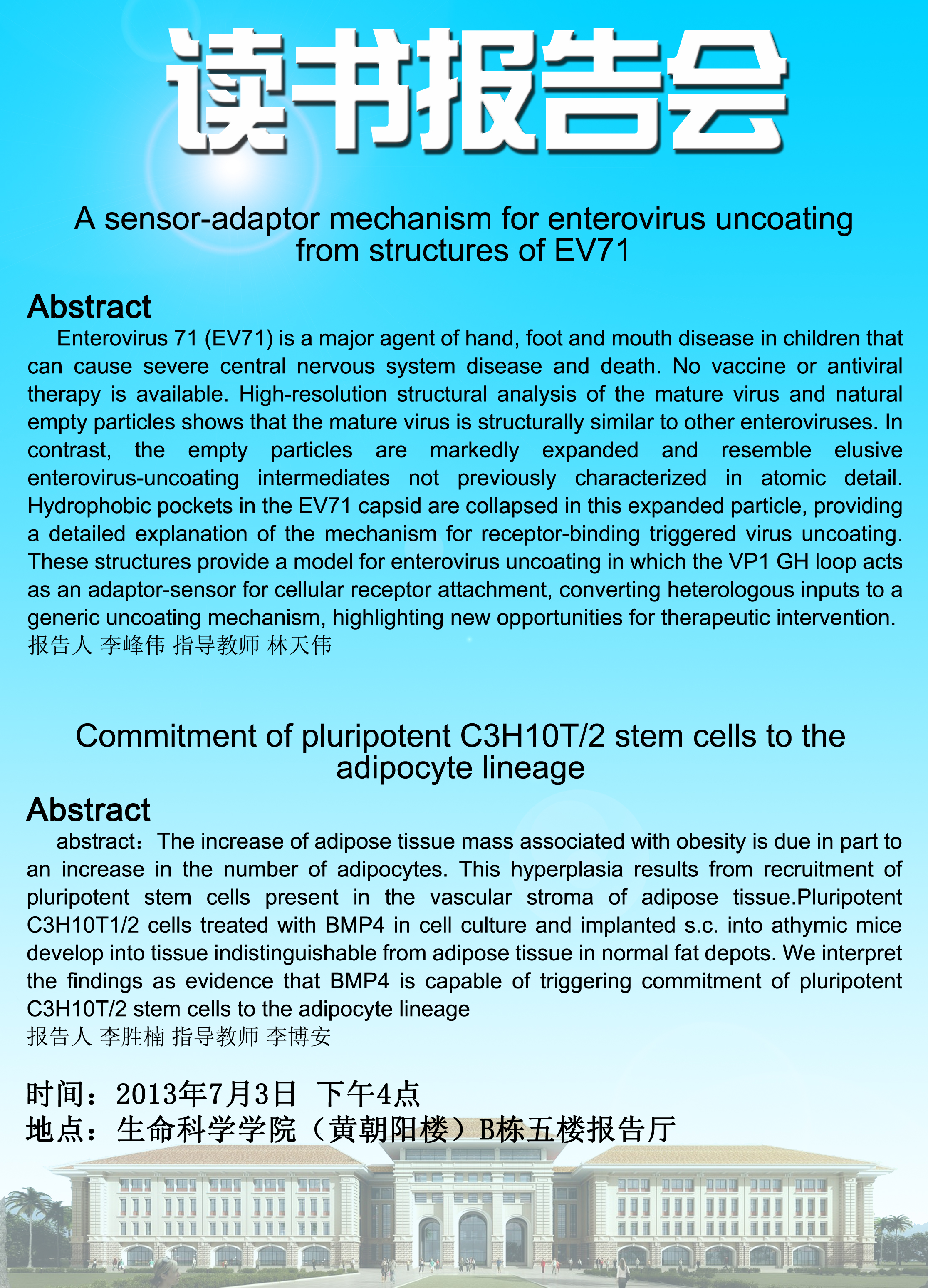A sensor-adaptor mechanism for enterovirus uncoating from structures of EV71 Enterovirus 71 (EV71) is a major agent of hand, foot and mouth disease in children that can cause severe central nervous system disease and death. No vaccine or antiviral therapy is available. High-resolution structural analysis of the mature virus and natural empty particles shows that the mature virus is structurally similar to other enteroviruses. In contrast, the empty particles are markedly expanded and resemble elusive enterovirus-uncoating intermediates not previously characterized in atomic detail. Hydrophobic pockets in the EV71 capsid are collapsed in this expanded particle, providing a detailed explanation of the mechanism for receptor-binding triggered virus uncoating. These structures provide a model for enterovirus uncoating in which the VP1 GH loop acts as an adaptor-sensor for cellular receptor attachment, converting heterologous inputs to a generic uncoating mechanism, highlighting new opportunities for therapeutic intervention. Commitment of pluripotent C3H10T/2 stem cells to the adipocyte lineage abstract:The increase of adipose tissue mass associated with obesity is due in part to an increase in the number of adipocytes. This hyperplasia results from recruitment of pluripotent stem cells present in the vascular stroma of adipose tissue.Pluripotent C3H10T1/2 cells treated with BMP4 in cell culture and implanted s.c. into athymic mice develop into tissue indistinguishable from adipose tissue in normal fat depots. We interpret the findings as evidence that BMP4 is capable of triggering commitment of pluripotent C3H10T/2 stem cells to the adipocyte lineage
报告人 李峰伟 指导教师 林天伟
报告人 李胜楠 指导教师 李博安


 微信平台
微信平台